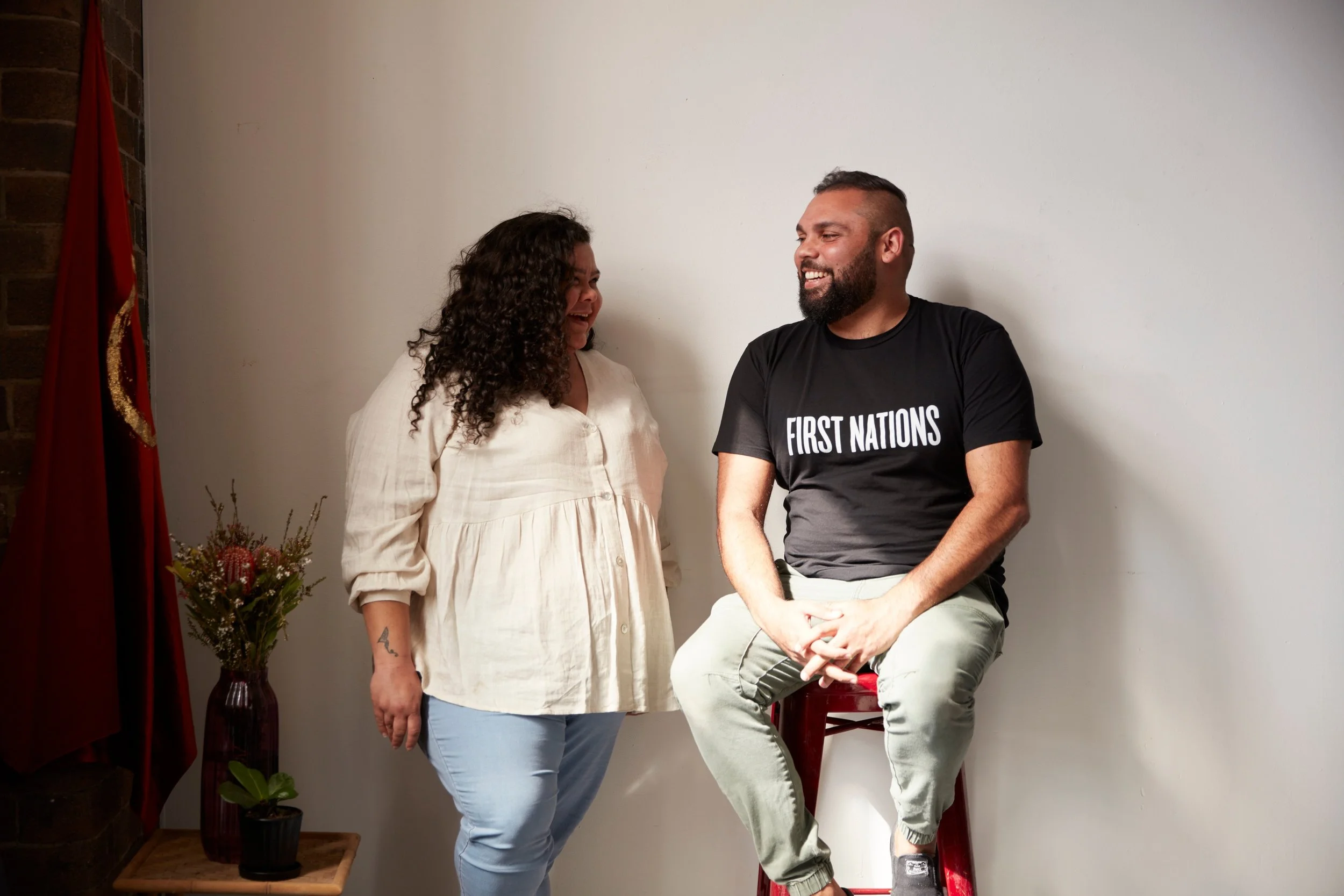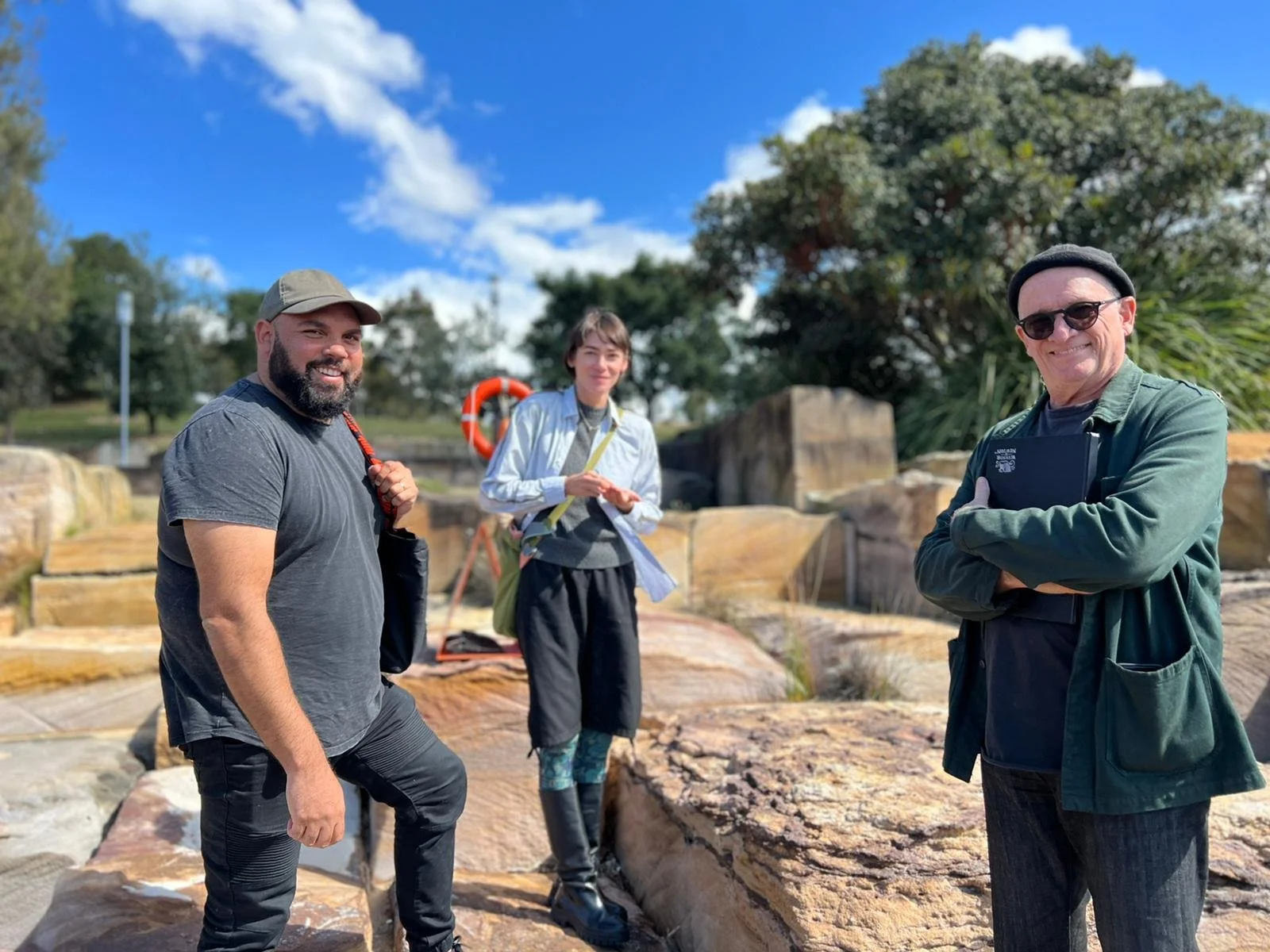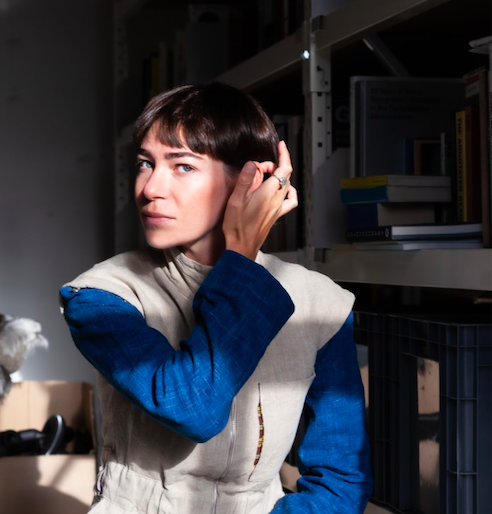Laura Clauscen elaborates on Tilt Industrial Design and its Public Art division
NSW-based studio Tilt Industrial Design is expanding its reach into Victoria and its investment in the public arts sector with the new appointment of Laura Clauscen as curator and design manager.
DIA: When and how did your career start?
LC: I graduated in 2012 from the School of Media and Communication at RMIT. In the year before this, I did an exchange program at The Hong Kong Polytechnic University School of Design. Living and studying in Hong Kong at this time greatly influenced my perception of a future career in design and the arts, broadly speaking, and my interests shifted instinctively towards visual and material culture studies and applied-arts design and production.
In 2013 I co-founded PractiseStudioPractise and Long Prawn with dear friends Lauren Stephens and Fred Mora, who continue to run both practices today. We were deeply curious and mercurial in our professional pursuits and creative skill sets. We saw this as an opportunity to work with like-minded businesses, providing creative direction, brand content, and spatial and object design. We ran a series of bootleg dining events called Otis Armada from 2014 to 2017, published a cookbook and continue to work with cultural institutions and programs, including MPavilion, National Gallery of Victoria, Melbourne Design Week, Open House Melbourne and RMIT.
In 2018 I began working for Broached Commissions as General Manager and then as Design Director in 2020. Broached is one of Australia’s foremost narrative-driven production studios and translates research (historical, environmental, social) into contextually-rich applied-arts collections, public art commissions, exhibitions and strategic creative direction for brands.
At Broached, I helped deliver several exhibitions, including Design Storytellers - a retrospective of Broached work at the NGV and Broached Recall - the studio’s first in-house-designed furniture collection launched at Design Miami in 2019.
These four-plus years at Broached fueled my passion for interpreting visual and material culture. I used research, writing, design and curation as tools for historical and social inquiry and for producing new objects, exhibitions and public art. I was fortunate to work with a range of local and international artists, designers and makers, each pushing boundaries in their modes of production - spanning traditional craft methods, chemistry, embodiment, digital technologies and the use of future materials.
In parallel to my professional experience, I occasionally make things. Most recently, a collection of bronze door handles drawing inspiration from Fabergé eggs and a long history of luxuriously decorated applied arts. The handle is a fascinating typology for me as it serves as a locus (sometimes deeply familiar) for navigating spatial thresholds.
‘Sea Mirror’ heliostat by Yann Kersale at One Central Park, Sydney. Photography Murray Frederick.
DIA: Tell us about your new position at Tilt and the growth of the studio’s public art division?
LC: Last month I commenced my new role at Tilt as Curator and Design Manager, Public Art.
The Public Art division at Tilt is its fastest-growing division. It is dynamic, experimental and agile - no two projects are the same. Many opportunities and starting points exist for artists and public art commissioners to work with Tilt. The public art division intuitively interweaves with the studio's other divisions and expertise, including custom architectural, landscape, play spaces and wayfinding.
I will work with artists, multidisciplinary creatives, curators, architects, landscape architects and developers to identify opportunities for integrated art in the public domain. And will support artists and creatives in translating ideas, whether driven by aesthetics or a curatorial premise, into site-specific public artworks. Sometimes this process will lend itself to supporting artists in forming non-traditional creative partnerships, for example, with researchers, academics, scientists, mathematicians, data analysts, writers, and specialised trades. I am particularly excited by this, and the Tilt team is well-positioned to support the development of such collaborations and unique outcomes.
We recognise that artists are often accomplished in their chosen medium or scale; however, their experience working in the public domain with varying materials, fabrication methods, and safety considerations may be limited, and that's where the Tilt team provides support and assurance. Our approach is very malleable; we conduct design studies, run artist workshops and open up our space for prototyping and experimentation—building trust, rapport and confidence that ideas can be realised about materials, fabrication, safety, longevity, budget, site integration and artistic intent.
As part of my new role, I also look forward to engaging in material R&D with the Tilt design team. A typical set of materials is called upon for public art production, mainly determined by budget and durability. However, as public art becomes more successfully embedded into the built environment, I believe there is an opportunity to explore new materials and draw attention to how materials can define and amplify curatorial themes and contextualise place and community.
One of the public art projects that drew me to Tilt was the Heliostat at One Central Park, made from an assembly of motorised and fixed mirrors that reflect sunlight during the day and transform into the video-based artwork 'Sea Mirror' by night. The Heliostat uses existing components from the solar tech industry in a masterfully recontextualised approach. It is an outstanding work that juxtaposes high technology with ephemeral softness and ambience.
‘Earth Deities’ by Ramesh Mario Nithiyendran, Vivid Sydney 2022. Public art consultant Creative Road. Photography Mark Pokorny.
Carmen Glynn-Braun and Dennis Golding of Re-Right Collective. Tilt is supporting Re-Right Collective for new artwork murals which will be located at South Sydney Rabbitoh's new home, Heffron Centre, Randwick.
DIA: Who are some of the artists you are currently working with?
LC:
Ramesh Mario Nithiyendran
Dennis Golding
Louise Zhang
Claire and Sean
Alison Page and Nik Lachajczak
DIA: How do you exercise multidisciplinary thinking in the creation of public art?
LC: Public art is inherently interdisciplinary in its conceptual evolution and relationship to land, space, people and physical production. The creation process of public art flows through a range of perspectives that shape an outcome; Traditional Owners, local communities, cross-cultural heritage consultants, archaeologists, water experts, rock experts, and wind experts; there is a special alchemy of ingredients that makes public art projects an experience of creative and cultural exchange. And, of course, the objective is that this exchange continues long after the art has been installed.
In creating public art (in any creative production process), I hope to encourage individuals and groups to break from their professional or cultural roles to switch perspectives with others. By releasing ourselves from disciplinary, social or cultural conventions for a moment, we can generate a much greater sense of possibility, free ourselves from habitual thinking and build empathy for others involved in the process.
Site visit, Laura with Dennis Golding and Warren Langley.
Phoenix Central Park Gallery, Chippendale with various architectural features delivered by Tilt. Photography John Gollings.
DIA: Describe your dream project.
LC: Creating a public pavilion for object and material-based learning. A space with little niches for the display of precious artefacts and external ledges for insects to dwell. An atmosphere, rather than a defined space, is maybe a better description, where sensation, temporality, movement, light, memory, material and immaterial objects coalesce.
Phoenix Gallery, for which Tilt developed over twenty custom architectural elements, has the ingredients of a dream project for me. It is the coming together of art, architecture and phenomenology in total unison.
DIA: What's your favourite Pantone colour and why?
LC: Today my favourite Pantone colour is 13-0443 TCX Love Bird. This colour marks the earliest signs of spring in Melbourne, and the leaves are so young and lacquered they look artificial. This colour is at once hopeful and grounded as it is intergalactic and grotesque.
Laura Clauscen
Tilt













